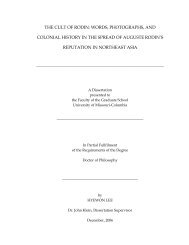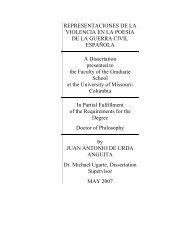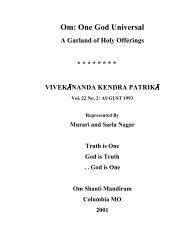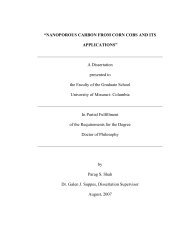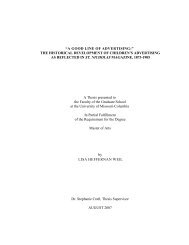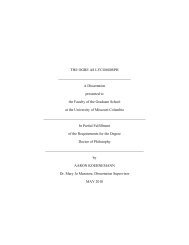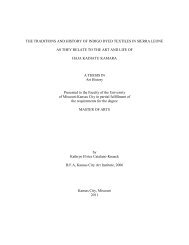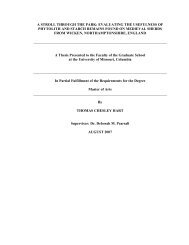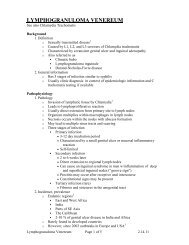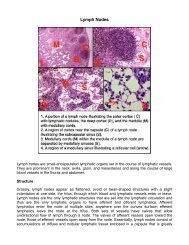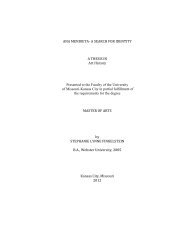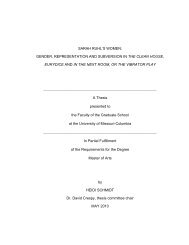Social Construction of Reality - Bad Request
Social Construction of Reality - Bad Request
Social Construction of Reality - Bad Request
Create successful ePaper yourself
Turn your PDF publications into a flip-book with our unique Google optimized e-Paper software.
This study employed qualitative research processes and used the social<br />
construction <strong>of</strong> reality theory as a conceptual underpinning. The use <strong>of</strong> qualitative<br />
processes allowed for the collection <strong>of</strong> rich, thick descriptions (Merriam, 1998), which<br />
was particularly important given that the social construction <strong>of</strong> reality theory is<br />
predicated upon the importance <strong>of</strong> words, phrases, and narratives to construct meaning<br />
and diffuse knowledge (Berger & Lucckmann, 1967). Essentially, this study resulted in<br />
two types <strong>of</strong> conclusions, procedural and process-use. Procedural conclusions involve<br />
those findings that stipulate the use <strong>of</strong> specific, clearly defined steps, methods, and tools<br />
that people throughout The School District can regularly expect to encounter when<br />
participating in a program evaluation. Process-use conclusions involve those findings that<br />
hinge on Patton’s (1997) notion that there <strong>of</strong> benefits <strong>of</strong> program evaluation that arise<br />
purely as a result <strong>of</strong> being engaged in the evaluation process and are “useful quite apart<br />
from the findings that may emerge from the processes” (p. 89). Of particular interest in<br />
this study is that the research findings could be aligned to three <strong>of</strong> the four evaluation<br />
industry-wide indicators <strong>of</strong> process use: enhancing shared understandings, increasing<br />
engagement, and program and organizational development (Pattton, 1997; King, 2007;<br />
Harner & Preskill, 2007).<br />
The most significant findings <strong>of</strong> the UFE were that a) The School District should<br />
implement clearly articulated procedures and tools, such as the type created as a result <strong>of</strong><br />
this study, and b) The School District should also intentionally incorporate process-use<br />
within future evaluation practice as a method to deliberately provide for evaluation-<br />
capacity building and knowledge creation within the organization.<br />
105



